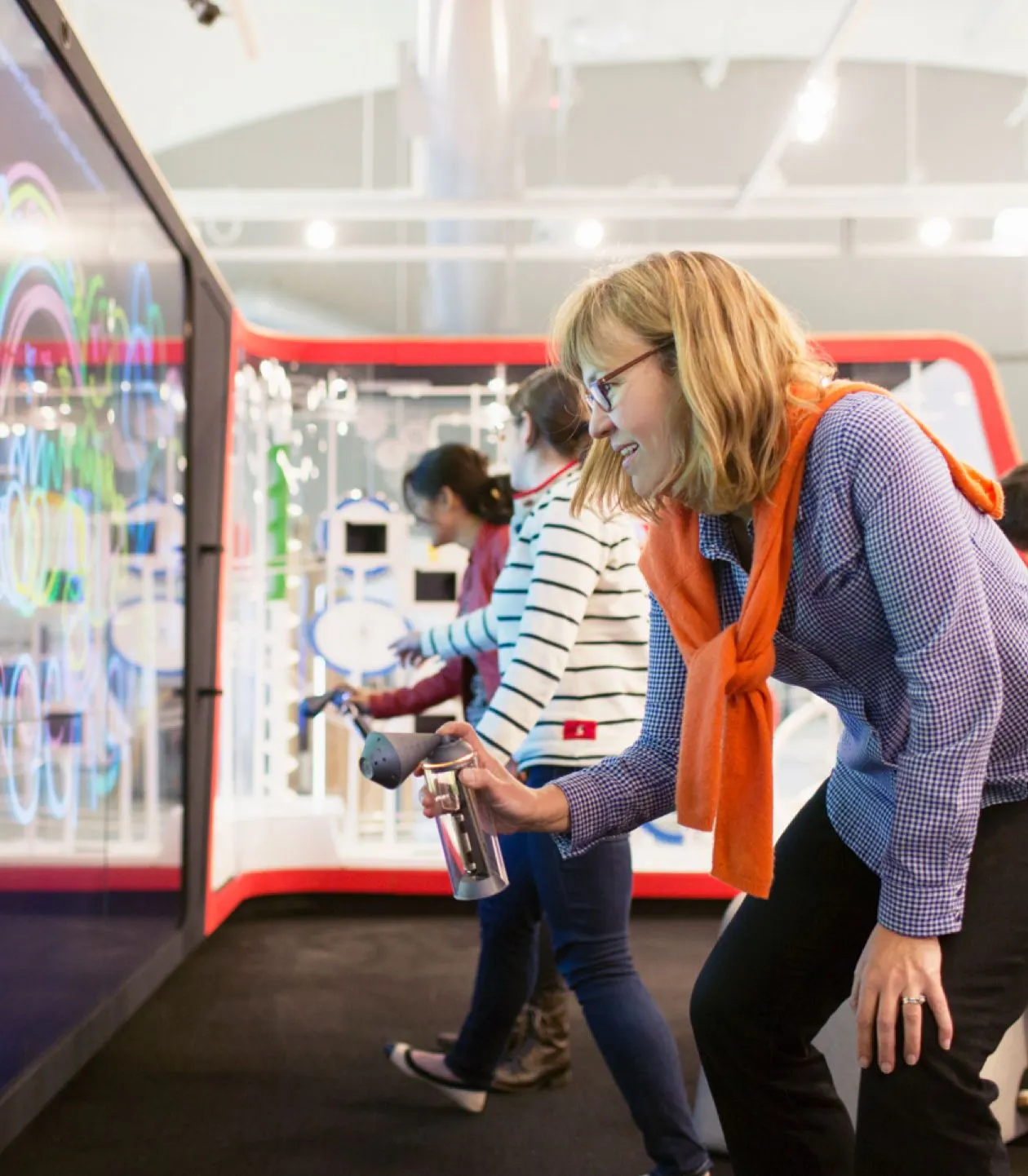Explore the challenges of creating seamless brand interactions online and offline – and how Elsewhen helped Google connect the customer experience across digital and physical retail channels.
The retail sector is a one business area that particularly highlights the opportunities, impacts and challenges of digital transformation.
The UK high street shopping environment has been disrupted dramatically by the growth of ecommerce. Digital stores like Amazon and marketplaces like eBay have brought greater convenience, lower prices and wider choice to retail. Traditional “bricks and mortar” retailers have been forced to adapt or die – introducing their own ecommerce offerings alongside physical stores.
Digital transformation of the retail landscape
More recently, new digital services have made whole categories of physical products and stores near-obsolete. As streaming media services such as Netflix and Spotify have grown, formerly widespread physical stores such as Blockbuster and Virgin Megastore have disappeared from the UK high street.
Those traditional retailers that have survived or even thrived in the digital era have needed to evolve their business model. They integrate their online and offline offerings under a seamless brand experience. For example, goods can be bought in a physical store and returned or exchanged via the online store – or vice versa. The combination of online convenience with physical in-store interaction can be a powerful competitive advantage over online-only retailers. But this kind of seamless customer experience across online and offline requires intelligent thinking – and innovative digital transformation of conventional business models.
Retailers say the digital journey is challenging
At Elsewhen, we recently surveyed business and technology leaders in the UK retail sector to understand their experiences and attitudes around digital transformation. Our research found that retailers believe there is still much work needed to adapt to the digital era.
According to 93% of retailers, there is “vast” or “significant” room for improvement in projects that focus on bringing new digital products and services to market. The research shows that 82% of retailers believe their business needs guidance in measuring the success of digital transformation projects, while 79% identify major gaps between digital strategy and what can actually be achieved. Visionary thinking is lacking – with 31% of retail sector organisations “relatively unlikely” to include a definition of their digital vision in their overall digital strategy.
Improving customer experience was highlighted by 56% of retailers as the overall goal of digital projects in the past 12 months.
As Elsewhen co-founder and chief product and strategy officer Leon Gauhman says. “Retail is in the eye of the storm when it comes to digital transformation. This new data highlights the constant pressure retailers face to adopt new processes and technologies in order to keep pace with accelerating customer demand.”
Putting seamless CX into practice for Google’s retail business
Elsewhen recently helped our client Google put retail customer experience transformation into action.
While all physical retailers have been forced to face the challenge of digital, Google is a digital leader increasingly moving into physical retail. As well as the online services that Google is famous for, they now also produce a wide range of consumer electronics products – including Chrome laptops and Pixel Android mobile devices.
As part of their wider retail strategy, Google launched an update to their branded space inside their UK flagship store – at Currys PC World outlet on London’s Tottenham Court Road – ahead of a wider rollout. Elsewhen was asked to help Google better understand the customer path to purchase in both directions – from online to offline and vice versa. We were also tasked to design and build the digital companion site for the physical space.
Google’s business goals were to drive more people to PC World’s Chrome Store, increase overall sales, and increase customer lifetime value (LTV). For this reason, the offline and online experiences needed to sync up and work together, presenting unified journeys for customers, making it easier for them to make the right purchase decisions.
Understanding how customers perceive Google's retail offering
We knew that customer perceptions were vital. Google has a wide ecosystem of products spanning both software and physical products, so maintaining consistent brand communication across them all presents various challenges. While a technology brand might assume the customer understands the benefits and relationships of products – mobile and desktop operating systems, browsers, apps, services, smartphones and other devices – this is not necessarily the case. Each customer will have their own mental model for how they think about this array of products – and this may look quite different from the brand’s version.
We also knew that it should be easy for customers to find the products that are right for their specific needs, rather than having to navigate around an overwhelming choice of products.
We helped Google to understand how customers see their offer. We also identified gaps that make life difficult for the customer – and then worked to close the gaps with an improved customer experience across online and offline journeys.
Making design decisions backed by customer research
From the beginning of the project, we knew that these challenges are not unique to Google. We researched the wider retail space to gain deeper understanding around the online and offline behaviour of customers shopping for consumer electronics products.
As the project was run according to agile methodology, the nature of the research had to be small-scale and allow for quick learnings. Nevertheless, it had to be detailed enough to provide an actionable assessment that would illuminate the path to execution.
We organised and conducted user research with Google’s different target audiences – ranging in age, purchase motivation and tech-awareness. Our research explored how customers approach Google’s product range, both online and offline.
Our findings informed our choices around the design and functionality of the online channel, and the role it plays in the wider customer experience.
Taking a modular approach for flexibility, measurement and consistency
We showed Google that today’s consumer electronics customers desire many different touch points, and want as much flexibility as possible. The challenge then is giving each customer segment what they want, while maintaining brand consistency and easy buyer journeys across all channels – and helping the customer stay in the engagement funnel.
For the design approach we developed a modular system with clear entry points to other online channels – Google product-specific sites, third-party retailers, and so on. This modular system enabled consistent Google product content to appear in existing positions on third-party sites – meaning there was no need to modify any of the current channels. Google was empowered to use a simplified, consistent and joined-up approach across all its retail channels.
We enabled customers to effectively access information for all Google retail products from one central and measurable resource. This can be dynamically tailored around each customer’s mental models and desired journeys. Based on the user research, we introduced a focus on the physical store’s events and services – which were identified by many customers as highlights of the existing retail experience. This made the connection between online and offline channels more explicit.
Our solution was successfully introduced at Google's flagship store, ultimately leading to a wider rollout across their online and offline retail channels.
Explore our case study to learn more
Find out more about how Elsewhen helped Google connect the customer experience across digital and physical retail channels.


